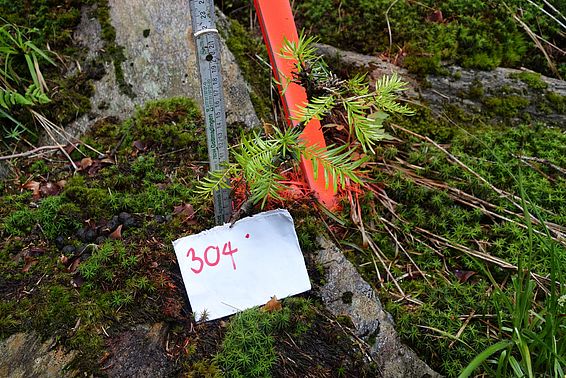Natural forest regeneration in the Valle Mesolcina
2015 - 2024
Cooperation Financing
In several mountain protective forests in the upper Valle Mesolcina, a lack of natural regeneration has been observed in recent years, particularly in silver fir (Abies alba Mill.), a highly palatable and slow growing tree species. Sustainable natural regeneration of this tree species is important for maintaining and improving the resilience of protective forests in the Southern Alps. However, increasing wildlife densities can impair the regeneration success. A better understanding of the interactions between forests and wildlife is therefore important for planning concrete measures to improve the adaptation of mountain forests to climate change. This research project analysed the regeneration dynamics of silver fir and other tree species at two sites in the Valle Mesolcina, a southern valley of the Grisons, over a period of seven years (2016 - 2022). We recorded natural regeneration of all tree species in monitoring plots. We also recorded the number of silver fir seedlings (<10 cm height) and saplings (>10 cm - 200 cm height) as well as sapling height growth. We also determined the browsing frequency and intensity. In addition, we analysed the influence of various environmental factors on silver fir regeneration.
The results show abundant silver fir seedlings in the study area, but comparatively few saplings. The proportion of browsed saplings increased between 2016 and 2022, and most seedlings were heavily browsed in the summer of 2022. In addition, the height growth of a significant proportion of seedlings even decreased over time, which can be attributed to ungulate browsing. The high seedling abundance in all three surveys indicate a high potential for natural regeneration of silver fir in these forests. However, these silver fir seedlings usually only survive for a few years as they are systematically browsed ungulates. Strong and increasing browsing pressure adversely affects the sparse silver fir regeneration in the studied protective forests in the Valle Mesolcina. Evidence-based wildlife management decisions are therefore important to secure successful silver fir regeneration ultimately contributing to the transition to a more resilient and future-proof mountain forest ecosystem.
